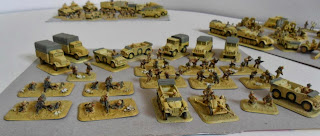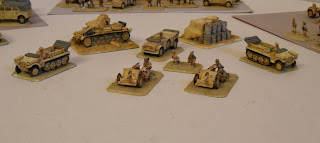Here's the work in progress. I've done 6mm Napoleonics before, but never any ancients or irregular types so the painting is a bit random at the moment. I'm generally splashing around some basic colours over a burnt umber undercoat. I'm following the WRG / Phil Barker guidelines on painting barbarians from years and years ago - you know, paint the coat of one figure, the trousers on another, the cloak on another and then just repeat with lots of different colours till it all starts to take shape. I'll see how I get on when it comes to putting in some more detail.
Most of these views are from the rear of the figures as I've not started the shields.
More later as these progress.





















































